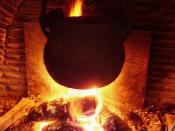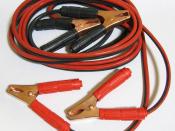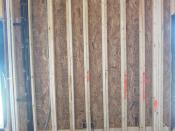Resistance in Wire
My task is to investigate how the length of a piece of wire affects its resistance.
Before we can begin to investigate the effect of length against resistance we have to understand what resistance is and how it is measured:
Resistance
Electricity is conducted through different types of conductors, metals, liquids and gases through free electrons. A free electron is an electron that is not attached to an atom or ion or molecule but is free to move under the influence of an electric field. The number of free electrons in a conductor will depend on the material from which it is made. If the conducting material has lots of free electrons it will be a better conductor than one with less (more free electrons means less resistance). An example of this is gold compared to a lesser conducting metal such as copper; Gold has more free electrons than copper and, subsequently, it is a better conductor.
Unfortunately we can't all afford to have our homes wired with gold so we have to compromise with a cheaper alternative.
When free electrons are given energy they move around and collide into other nearby free electrons. When this happens along the whole wire (connected at either end to crate a full circuit) a long chain reaction of moving free electrons is started and so electricity is conducted.
Resistance is a property of an electric conductor which opposes a flow of electricity and dissipates electrical energy away from the circuit, usually as heat. This heat is created when free electrons collide with fixed particles, impurities, and other free electrons within the metal. Due to these collisions some of the energy that the free electrons are carrying is wasted as heat energy.
How do we Measure Resistance?
Resistance in wire is...


